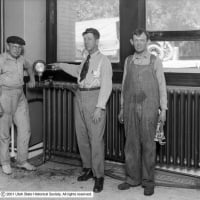Welcome! Here are the website rules, as well as some tips for using this forum.
Need to contact us? Visit https://heatinghelp.com/contact-us/.
Click here to Find a Contractor in your area.
If our community has helped you, please consider making a contribution to support this website. Thanks!
odors
Options
Debbie_5
Member Posts: 1
Hi, We had a new heat pump installed in june 08. the heat works great but since we put the heat on our house smells like dirty socks. Any suggestions
0
Comments
-
Maybe your husband's fault? clean socks every time should help...as for the heat, new units usually smell for a while.
TimJust a guy running some pipes.0 -
Id contact the installer and ask if they could stop by to have a look and make sure the condensation (that accumulated during the cooling cycle)has drained off properly. Just a thought.
Your friend in the industry,
Alan R. Mercurio
To Learn More About This Professional, Click Here to Visit Their Ad in "Find A Professional"There was an error rendering this rich post.
0 -
Dirty sock smell
is actually a real issue. As long as there are no dirty socks to blame, it seems to be caused by some sort of bacteria that can exist on or in the evaporator coil. It gets worse in transitional months like spring and fall. usually a good UV sterilizer will take care of it but it can be tough to get rid of.
Ken F
To Learn More About This Professional, Click Here to Visit Their Ad in "Find A Professional"0 -
a high quality UV light and duct fogging. also the higher end elctrostatic air purifiers do a great job at eliminating odors from the air as its ran thru the system0 -
Silicone caulk
smells like dirty feet, no?
ME0 -
From information gathered over many years, most professionals agree the "Dirty Sock Syndrome" is caused by a bacteria that collects and grows on the indoor coils of heat pumps and air conditioners.
Most customers describe the odor as a musky, dirty, locker room smell. The problem is similar to an odor that is blown out of a car air conditioner when the AC has not been used for a while.
It is very important to properly identify the problem before any action can be taken, since many odor problems are incorrectly labeled as a dirty sock problem. Eliminate dirty drain pans holding water, drain lines connected to plumbing systems without adequate traps or dry traps, return air leaks in ductwork or chases, or dead animals in ductwork or near the living space. If the odor is present ALL the time, especially during heat, the problem is NOT a dirty sock syndrome complaint. Dirty sock complaints only smell when the indoor coil gets cool and the bacteria releases its odor into the air stream.
The Dirty Sock Syndrome plagues 0.5 to 2 percent of heat pumps in the southern states, with Texas being on the lower side of the percentage. The syndrome is not brand specific, with all manufacturers acknowledging complaints. The problem itself is sporadic and limited to isolated households and is somehow related to the living style or products in the home. This can be proven as Trane and other manufacturers have documented changing out systems with new product and the complaint returns. After removing a "stinky" unit from a complaint house, the unit can be cleaned and installed elsewhere without a complaint surfacing. Changing the brand of equipment is met with a similar lack of success. Much effort and expense has been given by the industry to research and solve this syndrome.
Once the problem has been properly identified, action can then be taken to resolve or reduce the complaint, starting with a thorough cleaning of the evaporator coil with a non-acid coil cleaner. Cleaning will bring the system back to normal and will usually prevent a complaint for the rest of the heating season. Some systems cleaned early in the season or those having more of a problem may have repeated problems during the same season, especially if the weather conditions force a system back and forth from heating to cooling. The majority of complaints are resolved with a thorough cleaning.
If the coil cleaning does not resolve the complaint to a satisfactory level, the next suggested action would be to clean the coil again and apply a coating of Alathene II, a special spray designed to continuously protect coils from fouling caused by airborne contaminates. If seasonal cleanings or the application of Alathene II does not resolve the complaint, as a last resort, your coil may need to be replaced.
0 -
Wetheads
outnumber airheads here but accurate air system answers are available on The Wall too as that one proves. It is fun to joke about the name of the problem but it really upsets a customer when they have it. They want it to go away yesterday. It is more prevalent with new systems and that reduces the tolerance of a customer too. It sparks the "I just paid a lot of money for this system and you need to fix it now" reaction.
Ken F
To Learn More About This Professional, Click Here to Visit Their Ad in "Find A Professional"0 -
Hi, Debbie.
Check for my answer in the Indoor Air Quality section at the bottom of the page.0
This discussion has been closed.
Categories
- All Categories
- 87.4K THE MAIN WALL
- 3.2K A-C, Heat Pumps & Refrigeration
- 61 Biomass
- 429 Carbon Monoxide Awareness
- 120 Chimneys & Flues
- 2.1K Domestic Hot Water
- 5.8K Gas Heating
- 115 Geothermal
- 167 Indoor-Air Quality
- 3.7K Oil Heating
- 77 Pipe Deterioration
- 1K Plumbing
- 6.5K Radiant Heating
- 395 Solar
- 15.7K Strictly Steam
- 3.4K Thermostats and Controls
- 56 Water Quality
- 51 Industry Classes
- 50 Job Opportunities
- 18 Recall Announcements


